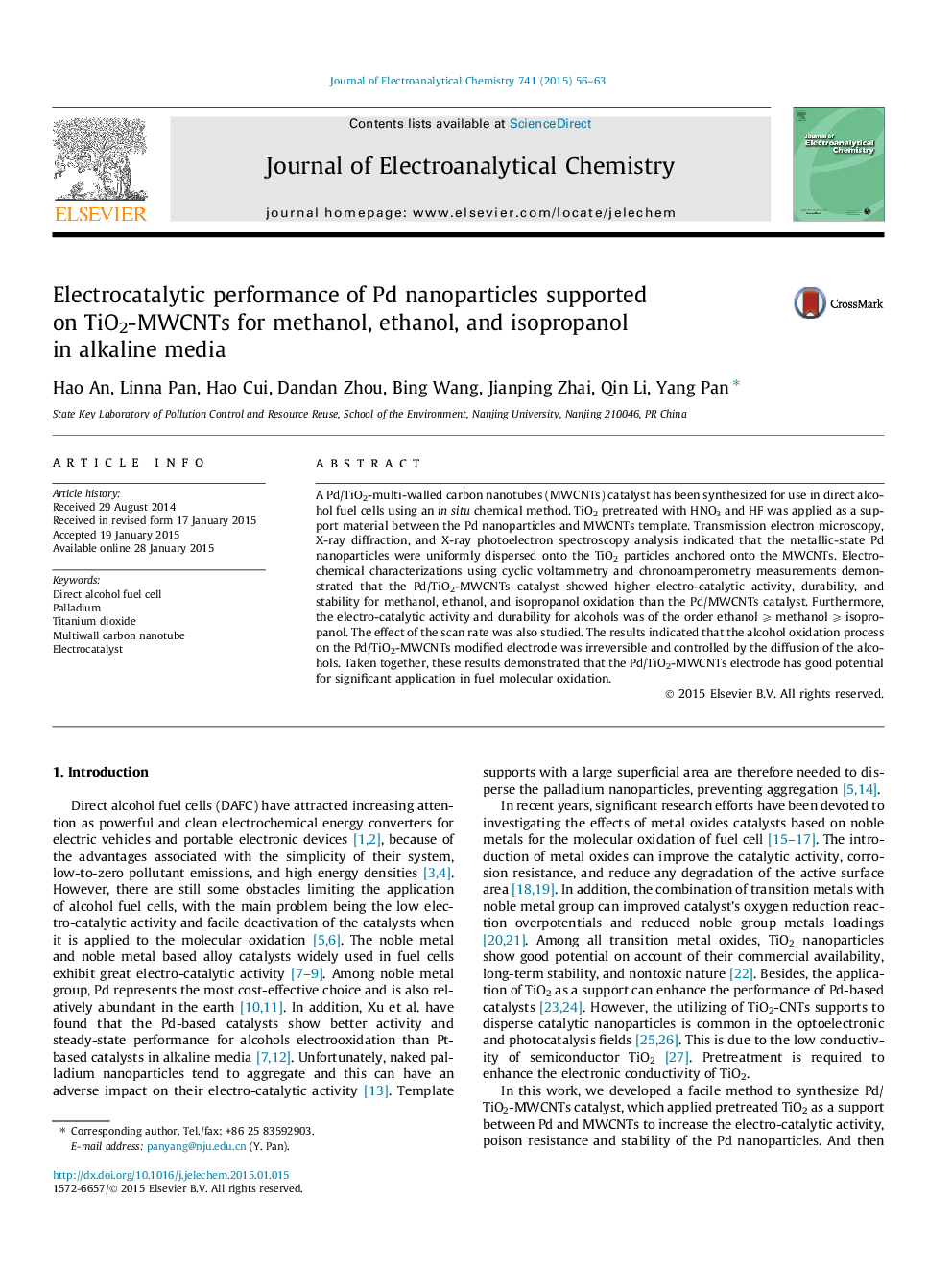| Article ID | Journal | Published Year | Pages | File Type |
|---|---|---|---|---|
| 218491 | Journal of Electroanalytical Chemistry | 2015 | 8 Pages |
•HF and HNO3 were used to enhance TiO2 conductivity and surfactivity.•TiO2 was applied as support between Pd and MWCNTs.•The introduction of TiO2 highly improved the catalyst catalytic activity.•The Pd/TiO2-MWCNTs shows great electrochemical abilities for alcohols oxidation.
A Pd/TiO2-multi-walled carbon nanotubes (MWCNTs) catalyst has been synthesized for use in direct alcohol fuel cells using an in situ chemical method. TiO2 pretreated with HNO3 and HF was applied as a support material between the Pd nanoparticles and MWCNTs template. Transmission electron microscopy, X-ray diffraction, and X-ray photoelectron spectroscopy analysis indicated that the metallic-state Pd nanoparticles were uniformly dispersed onto the TiO2 particles anchored onto the MWCNTs. Electrochemical characterizations using cyclic voltammetry and chronoamperometry measurements demonstrated that the Pd/TiO2-MWCNTs catalyst showed higher electro-catalytic activity, durability, and stability for methanol, ethanol, and isopropanol oxidation than the Pd/MWCNTs catalyst. Furthermore, the electro-catalytic activity and durability for alcohols was of the order ethanol ⩾ methanol ⩾ isopropanol. The effect of the scan rate was also studied. The results indicated that the alcohol oxidation process on the Pd/TiO2-MWCNTs modified electrode was irreversible and controlled by the diffusion of the alcohols. Taken together, these results demonstrated that the Pd/TiO2-MWCNTs electrode has good potential for significant application in fuel molecular oxidation.
Graphical abstractFigure optionsDownload full-size imageDownload as PowerPoint slide
